calsfoundation@cals.org
M. E. Oliver (1888–1974)
aka: Marvin Elmer Oliver
Marvin Elmer Oliver was an artist, farmer, and civil service employee in the Arkansas Ozarks. In 1955, he produced a book, Strange Scenes in the Ozarks, which attracted notice because of its unique artistic qualities. Text and illustrations were printed using the silk-screen (or serigraph) process, assembled by hand, and enclosed in a handmade cover. Oliver published 400 copies. The text describes the backwoods life Oliver remembered, which was almost completely gone by the time he produced his book. His distinctive illustrations make Strange Scenes in the Ozarks an item of interest to collectors of Arkansiana and of regional art. Oliver later published Old Mills of the Ozarks (1969) with black-and-white sketches, descriptions, and locations of twenty water-powered mills.
M. E. Oliver was born on August 13, 1888, on Drakes Creek, a few miles southeast of Huntsville (Madison County). He was one of eight children of Pleasant C. and Mary Ann Cook Oliver, who were farmers. When he was thirteen years old, his mother died, and he went to Viola (Fulton County) to live with relatives. His first employment was as a farm worker, and later he worked in a broom factory in Oklahoma.
During World War I, he served in the army in 1918–1919 in France as a company dispatcher and bugler with the 308th Battalion, Seventh Infantry. He was wounded and sent home to recuperate in a Little Rock (Pulaski County) hospital. After his discharge, he studied art in a vocational and rehabilitation program for veterans and at the School of Fine and Applied Arts in New York City. Later, as a freelance commercial artist, Oliver worked as an illustrator for Harper & Brothers, publishers of both books and illustrated magazines, and for the Magazine of Wall Street.
Returning to the Ozarks in 1927, he married Bessie Simmons of Combs (Madison County). The couple operated a fruit farm near Japton (Madison County), southeast of Huntsville. They had a son, John W. Oliver. In 1940, they moved to Huntsville, where Oliver worked for the Selective Service System. He later served as a state revenue inspector and as a municipal judge. Oliver retired from public service in 1954.
Strange Scenes in the Ozarks is Oliver’s attempt to capture in words and vivid images some impressions of the rural Ozarks culture he had lived in as a youth. The serigraph process, while not native to that culture, was for Oliver an old-fashioned technique that he had learned in his training as an illustrator. In this process, each page was a unique artistic product. First, he made several drawings in various degrees of detail. Then he cut stencils from an adhesive-backed film, one for each color used as well as for the hand-lettered text. The stencils were attached in turn to a piece of silk in a wooden frame. Next, Oliver rolled on his hand-made inks, forcing them through the silk onto a sheet of paper. In some cases, eight different colors were applied, one after another, to a single page. The book was not actually bound, but the pages were gathered with brass fasteners and laid into a portfolio displaying the title and another illustration. Because the copies were assembled by hand, they are likely to differ from each other, but each copy has about thirty illustrations.
The book focuses on some less familiar cultural items of Ozark life, including a “mountain rascal” (a bed built into the corner of a cabin) and a tub mill used for milling grain. It also depicts elements of Oliver’s autobiography, with a stork carrying a baby flying above a log cabin and the title, “This is where I first saw Arkansas.” In “Jumbo and Drakes Creek,” an elephant documents a visit of the circus to the Ozarks. Although the book is dated 1955, Oliver added a few illustrations later; some pages are dated 1958 and 1963.
Oliver died on November 12, 1974, in Fayetteville (Washington County). He is buried in the Drakes Creek Cemetery.
For additional information:
Anderson, Vernon. “View from the Hill.” The Ozarks Mountaineer 22 (December 1974): 3.
Deane, Ernie. “He Came Home to Paint Hills of His Boyhood.” Arkansas Gazette Sunday Magazine. April 19, 1959, p. 1.
Edmisten, Robert. “Artist Recorded Ozark Way of Life.” Morning News [Springdale]. December 24, 2000, p. 6H.
Ferguson, John Lewis. Arkansas Lives: The Opportunity Land Who’s Who; a Reference Edition Recording the Biographies of Contemporary Leaders in Arkansas with Special Emphasis on their Achievements in Making it One of America’s Greatest States. Hopkinsville, KY: Historical Record Association, 1965.
Mitchell, Dorothy. “Strange Scenes in the Ozarks.” The Ozarks Mountaineer 15 (September 1967): 14–15.
Ethel C. Simpson
University of Arkansas, Fayetteville
 Arts, Culture, and Entertainment
Arts, Culture, and Entertainment Literature and Authors
Literature and Authors World War II through the Faubus Era, 1941 through 1967
World War II through the Faubus Era, 1941 through 1967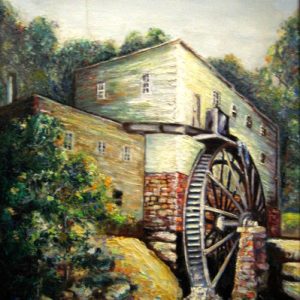 Cane Hill Mill
Cane Hill Mill 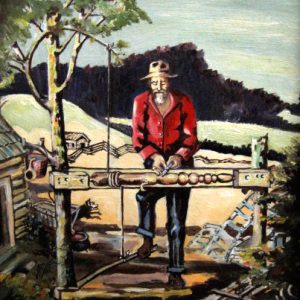 Foot Lathe
Foot Lathe 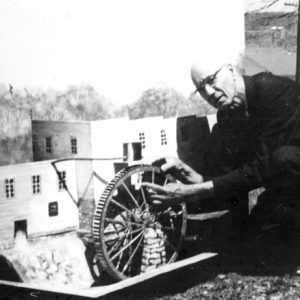 M. E. Oliver
M. E. Oliver 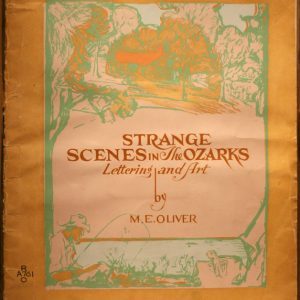 M. E. Oliver's Strange Scenes in the Ozarks
M. E. Oliver's Strange Scenes in the Ozarks 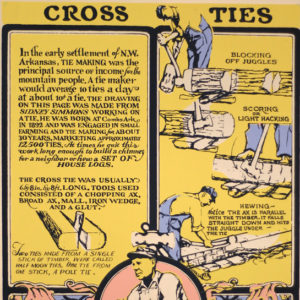 M. E. Oliver's Strange Scenes in the Ozarks
M. E. Oliver's Strange Scenes in the Ozarks 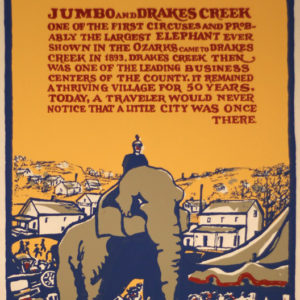 Strange Scenes in the Ozarks by M. E. Oliver
Strange Scenes in the Ozarks by M. E. Oliver 




Comments
No comments on this entry yet.